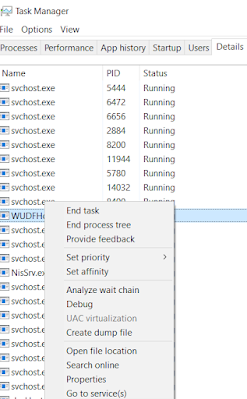Get Your Website Back on Track: Fixing Common SEO Errors
Excited to build your website? You are on the right path to achieve Financial Freedom, Have a look at the below mentioned SEO tips which would help you in your journey of Content Creation.
Use targeted keywords:
Identify a few keywords that your audience is likely to use
when searching for content related to your blog post. You can use tools like
Google Keyword Planner, Ahrefs, or SEMrush to find relevant keywords. Once
you've identified your main keyword(s), use them in the following places:
Title tag: Make sure your main keyword appears in the title
of your blog post. For example, if your main keyword is "healthy eating
tips," your title could be "10 Healthy Eating Tips for Busy
People."
Meta description: The meta description is a brief summary of
your blog post that appears in search engine results pages. Include your main
keyword in the meta description to help improve your SEO. For example,
"Learn 10 easy and practical healthy eating tips for busy people to stay
fit and healthy. Our tips include meal prep, portion control, and more!"
Body content: Use your main keyword throughout the body of
your blog post, but don't overdo it. Try to use your keyword naturally and use
variations of it as well. For example, "Eating a variety of nutrient-dense
foods is one of the most important healthy eating tips. Aim to include a mix of
fruits, vegetables, whole grains, and lean proteins in your meals."
Optimize meta description:
The meta description should accurately summarize the content
of your blog post and entice readers to click through to your website. Here's
an example of a good meta description for a blog post about healthy eating
tips:
"Discover 10 practical and easy healthy eating tips for busy people. From meal prep to portion control, we've got you covered! Improve your health and well-being with these simple tips."
Add alt text to images:
Alt text provides a text description of the image, which can help search engines understand the content of your post. For example, if you have an image of a healthy salad, your alt text could be "Healthy salad with mixed greens, cherry tomatoes, avocado, and grilled chicken."
Use header tags:
Header tags (H1, H2, H3, etc.) help structure your content
and make it easier for readers and search engines to understand. Here's an
example of how you can use header tags in a blog post about healthy eating
tips:
H1: 10 Healthy Eating Tips for Busy People
H2: Tip 1: Plan Your Meals in Advance
H2: Tip 2: Pack Your Lunch
H2: Tip 3: Use Portion Control
H2: Tip 4: Choose Whole Foods
H2: Tip 5: Eat More Fruits and Vegetables
H2: Tip 6: Incorporate Lean Proteins
H2: Tip 7: Reduce Your Sugar Intake
H2: Tip 8: Drink Plenty of Water
H2: Tip 9: Cook at Home
H2: Tip 10: Practice Mindful Eating
Increase word count:
In general, longer blog posts tend to perform better in search engine rankings. Try to provide more value to your readers by adding more detailed explanations, examples, or research to your blog post. For example, if you're writing a blog post about healthy eating tips, you could add a section about the benefits of healthy eating, or include some healthy and easy recipes.
Build high-quality backlinks:
Building backlinks from other reputable websites can help improve your blog post's SEO. For example, if you're writing a blog post about healthy eating tips, you could reach out to other health bloggers.

Comments
Post a Comment